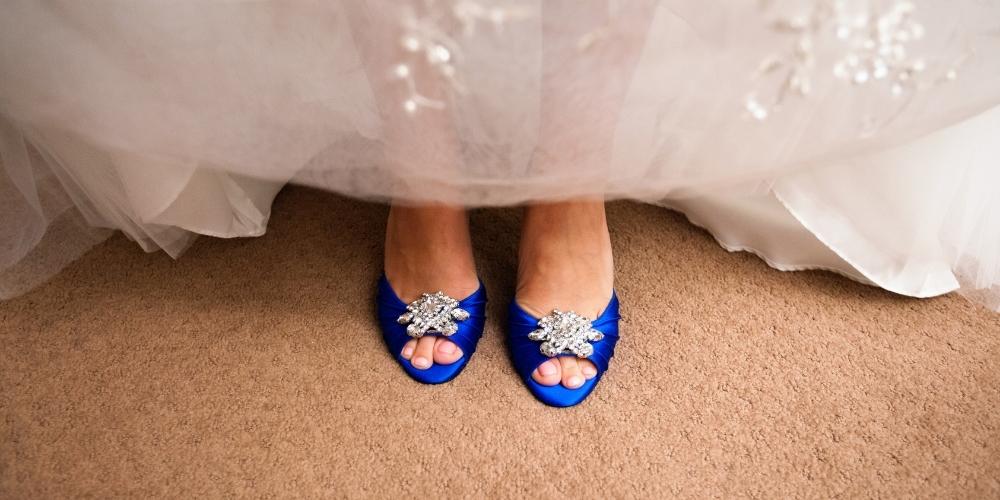
3 Common Toenail Injuries and How to Treat Them
Dec 02 , 2021
Tags - Toenail Injuries
Even though toenails are just a small part of your body, an injury to them can have a massive impact on the way you move and alter the quality of your life.
I mean, you can probably imagine the excruciating pain you feel when you stub your toe - it’s not pleasant at all.
And in that moment, that sharp, stabbing pain is just a fraction of what a significant toenail injury can feel like.
So, it’s not something to take lightly.
Essentially, the more prompt you are with your treatment plan, the better prepared you will be and prevent the pain from getting out of hand.
That said, here are 3 common toenail injuries and what you can do to treat them if it happens to you.
1. Ingrown Toenails
Ingrown toenails can affect basically anyone.
Simply, if you have an ingrown toenail, the edge of your nail becomes thick and jagged, and the nail starts to grow into the insides of your nail bed.
Unpleasantly, this can cause the nail itself to painfully pierce into your skin.
And, if you don’t treat an ingrown toenail in time, it can result in an infection, which is the last thing you want!
Before we look at how to treat an ingrown toenail, here are a few signs that it’s forming:
- Foul smell
- Thick, cracked or discoloured nail
- Warmth in that area
- Build up fluid that can start to seep
- Redness
- Swelling
- Pain
Now you know the signs, here’s how you can treat an ingrown toenail from the comfort of your own home.
To begin, soak your foot in warm water with some epsom salts which will soothe and soften the area; it will also push any excess pus to drain out and reduce pain.
Then, apply an antifungal cream to the affected area which will help to prevent a possible infection.
In regards to the pain, you can take over-the-counter medications which will also help to reduce any swelling.
However, when you’re trying to treat an ingrown toenail at home but don’t see any difference, you may need to seek professional medical advice, in which case you should visit your doctors, who can either partially or fully remove the nail.
2. Subungual Hematoma
Don’t be alarmed, subungual hematoma may sound serious but it’s actually quite common.
Essentially, this is the injury you experience if you drop something on your toe and it turns black and blue, or falls off altogether.
Simply, this happens when the blood vessels underneath the nail pops open, thus causing blood to spread.
Sometimes, even wearing poorly fitted shoes during certain exercises and activities, like football, can result in this injury.
Although mild, it can still be very painful, and the most common symptoms are:
- Discoloured nail
- Feeling pressure under the nail
- Tender to touch
- Blood under the nail
In order to treat this injury, it’s recommended to use the RICE treatment at home.
To put it simply, this means:
- Rest; limit how much you use the toe
- Ice: to reduce pain and swelling
- Compression: to reduce blood flow
- Elevation: to reduce swelling
And, if this is not enough, for example if the pain becomes unbearable, you may need to get the nail removed by your doctor.
In some cases, your doctor may try to save the nail by draining blood from the area, which involves making a small hole.
3. Fungus
Fungus infections, although not a direct injury, are still a very common condition that affects your toenails.
Often, this occurs due to a different issue, like an ingrown toenail, and fungus will grow in the area where the nail is loose or where there’s broken skin.
Furthermore, it’s also quite common in people with athlete’s foot and diabetes.
In terms of symptoms, this is what could indicate a fungal infection:
- Cracked or fragile nail
- Thick nail
- Discoloured nail; brown or yellow
Unlike the first two injuries discussed above, you should not experience pain with a fungal infection, unless it’s extreme.
To treat, the best thing you can do is use an antifungal treatment, but in severe cases, you may need to get the toenail removed.
Final Words
Generally speaking, toenail injuries can be easy to treat at home.
But, it’s important to act fast to prevent any serious complications that can affect your ability to move.
As such, if treatments are not effective, make sure you visit your doctor as soon as possible so they can assess the injury and take necessary action.
Want to know more? Please get in touch today.
You may also like:
